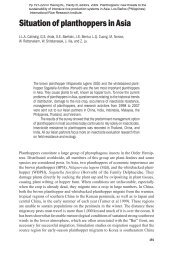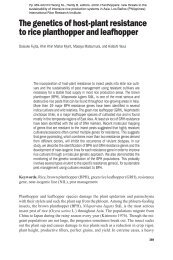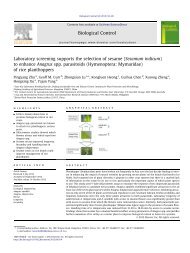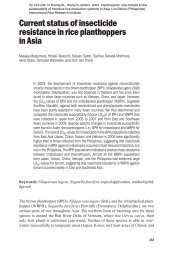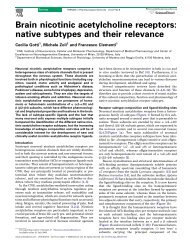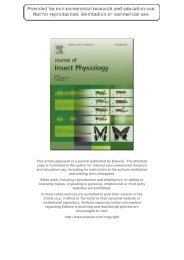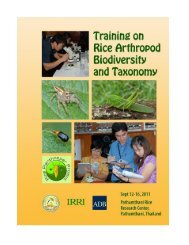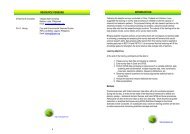Final Report Appendix 5 (Ho Chi Minh City Revised ... - Ricehoppers
Final Report Appendix 5 (Ho Chi Minh City Revised ... - Ricehoppers
Final Report Appendix 5 (Ho Chi Minh City Revised ... - Ricehoppers
You also want an ePaper? Increase the reach of your titles
YUMPU automatically turns print PDFs into web optimized ePapers that Google loves.
The rice plant is enclosed with a<br />
mylar cage after field exposition.<br />
A black cloth covers the mylar cage<br />
with a glass tube on top for parasitoids.<br />
Counting of hoppers/m2<br />
White enamel plates coated with sticky substance can be used to count the number of hoppers<br />
per hill.<br />
Sampling of hoppers by hill<br />
1. Use a white enamel plate with 30 x 45 cm dimension.<br />
2. Spread kerosene ( or petroleum jelly) or anything sticky on the plate. (Leave a small<br />
space uncoated for easy handling).<br />
3. Position the plate close enough to the base of the rice hills or plants carefully to avoid<br />
agitating the planthoppers and tap the hills several times with the hand to collect the<br />
hopper.<br />
4. For transplanted fields, tap 2 hills at a time and sample 5 times for each field. For direct<br />
seeded fields, use 0.05 m 2 for each sampling and sample 5 times for each field.<br />
5. Bring the plate to the laboratory and count the number of hoppers based on age (young<br />
nymphs from 1 st – 3 rd instars and mature nymphs from 4 th – 5 th instars) and forms (shortwinged<br />
or brachypterous and long-winged or macropterous) that stick to the board.<br />
6. Do the sampling at 7 day intervals.<br />
Sampling of hoppers using an enamel plate.



